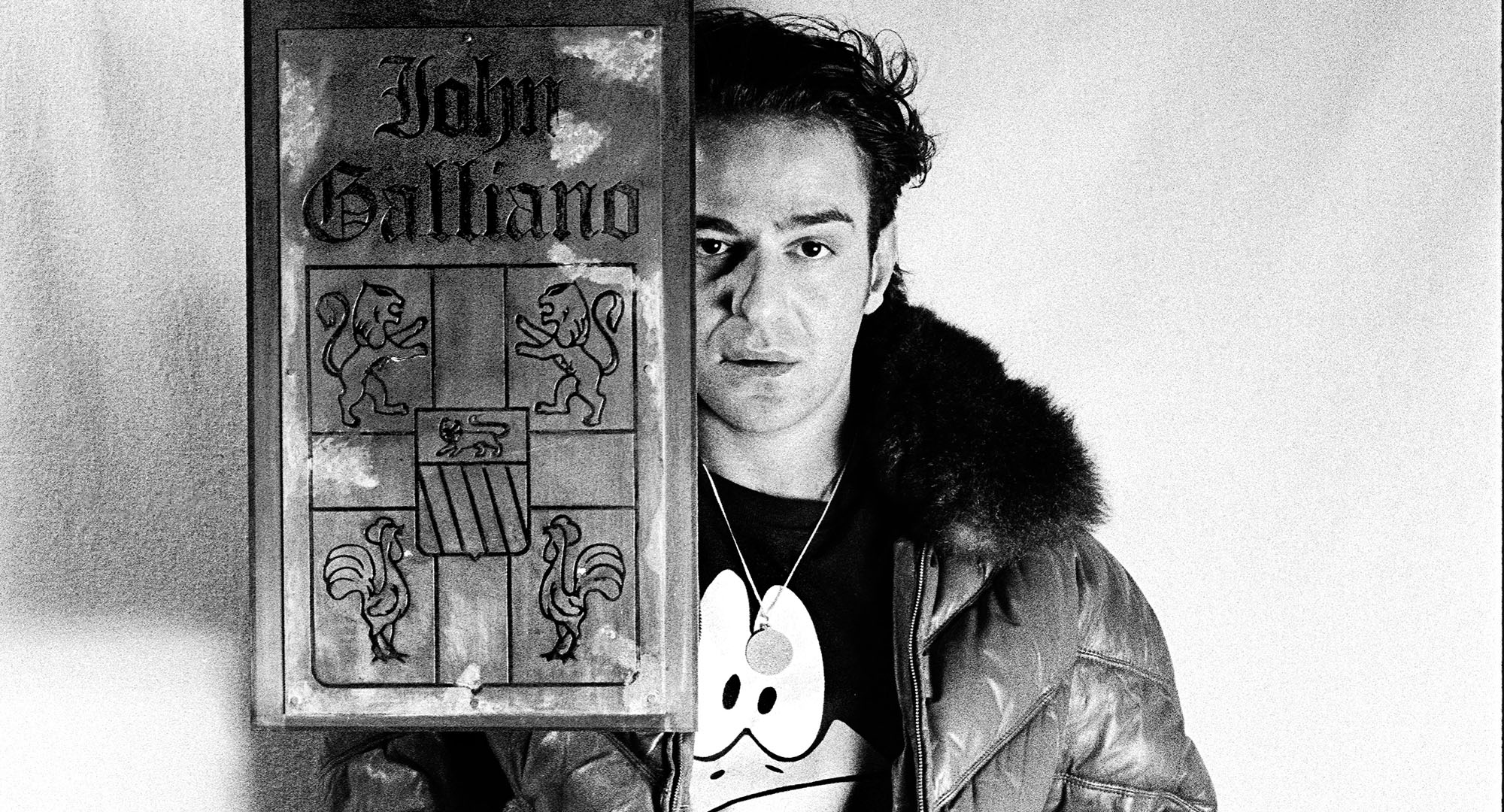The return of John Galliano — the British Fashion Designer ostracized for spouting antisemitic hatred — is explored by Oscar-winning director, Kevin Macdonald, in his new “psychological” film, High & Low.
John Galliano anxiously crouches backstage of the Maison Margiela Autumn-Winter 22 show — Biting his fingernails as a montage of that infamously filmed, explosive, racist outburst at a Parisian brasserie appears in flashes before us.
This is the story that Oscar winning director Kevin Macdonald, chooses to spotlight in his latest film; how John Galliano, one of the most esteemed couturiers lost himself into a sea of personal troubles during the rise and fall of his tenure in fashion.
The director of The Mauritanian (2021) and The Last King of Scotland (2006) knew he wanted to make a film about Cancel Culture. The breakthrough came when someone suggested Macdonald contact Gibraltar-born British fashion designer John Galliano. Thus, the once-darling of the fashion world — the Napoleon bicorne hat donning, bare-chest strutting ex-creative director of Dior — was decidedly the film’s subject.
“John is regarded as one of the great designers of the last hundred years” he says. “We’re living in a time in which well-known people are getting caught by socially unacceptable behavior.” Macdonald was interested in why some celebrities are exiled from mainstream approval, and why some are allowed to return. “Is there a mechanism for forgiveness in society?,” he asks.
In ‘High & Low — John Galliano’, the Scottish film director explores how the British fashion designer’s starry reputation in the 1990s and 2000s began to dull when the demands of running two fashion houses took its toll – leading to drugs and alcohol fronting the picture.
“I started having panic attacks. I couldn’t go to work unless I had taken some Valium,” Galliano admitted. He started drinking “in a cyclical way” in 2007. “After every creative high I would crash and the drink would help me to escape.”
In 2010, Galliano’s assistant reported his out-of-control behavior to Dior’s CEO, Sidney Toledano, which led the designer to sack her for conspiring against him. A few months later, the designer was caught up in an anti-semitism scandal that questioned whether the Dior creative director would ever be able to redeem himself at the top of the fashion world.
He was sacked from his post as creative director of the French fashion house Dior, effectively banishing the designer from the Paris fashion scene overnight. But, in 2014, Galliano made a comeback of sorts, landing the role of creative director at Maison Martin Margiela.
Conde Nast, the entertainment company that publishes the likes of Vogue and Vanity Fair, are said to have played a part in Galliano’s public return, with Anna Wintour and Jonathan Newhouse, the company’s chairman, landing him a brief stint at Oscar De La Renta before his tenure at Margiela.
Conde Nast appears notably on the film’s credits, raising questions about the film’s editorial independence, though Macdonald claims High & Low is “an entirely independent production financed by a French producer.”
Rather than exploring Conde Nast’s role in “un-cancelling” Galliano, Macdonald focuses on the film as a “psychological detective story”, resulting in a sympathetic depiction of the designer.
Freudian concepts of the ‘superego’ are introduced by Dr Philippe Batel, suggesting that Galliano’s self-destructive behavior may stem from his childhood struggle, both as a foreigner and identifying as gay, to find acceptance.
The fear of his father’s discovery of his ‘unaccepted’ sexuality and the suspected violent repercussions leads young Galliano to live in a world of make-believe, constructing his own fantastical world – from hiding in the bathroom to apply his mother’s make-up to dressing in his sister’s clothing. Fashion, he finds, is a secret gateway to his self-expression, an escapism where creativity is celebrated, rather than shunned.
Dr Philippe Batel proposes his own psychoanalysis; rejection in Galliano’s Orthodox Catholic family leads to his obsession with seeking appraisal through the success of his career. According to Batel, he instils a superiority complex; Galliano’s behavior follows a need to be garish, to be accepted, to maintain authority for the sake of proving his childhood experiences wrong. Batel’s theory allows us to understand Galliano’s drug addiction and his dependency for other people, painting a timid, vulnerable character. Here, Macdonald notes the remarkable parallel between Galliano and the late Alexander McQueen.
“These two characters are in many ways very similar,” Macdonald agrees of both designers. “They’re both gay, white, working-class Londoners who go to St Martins school of art. John is the one who breaks the ice in Paris and McQueen is brought in behind him. It’s less than a year before John’s incident happens that McQueen [dies by] suicide, so you have to think there was something going on at that time.”
Still, High & Low isn’t quick to blame the fashion industry entirely for Galliano’s tirades, but offers a glimpse of its hypocrisy. From Naomi Campbell to Anna Wintour, the brushing aside of Galliano’s behavior does not come off well for an industry that claims to hold diversity dear.
Macdonald insists that everyone involved “wanted an honest film to be made” whilst Galliano addresses that the aim of the film is not to be forgiven, but rather to be “a little more understood”.
Whether High & Low allows us to understand Galliano more than he is forgiven, fashion has decidedly accepted the return of its showman.
Homepage archive shot of John Galliano by Derek Ridgers; archival shot of John Galliano and Anna Wintour by Bestimage. Above image, archival image of John Galliano by Barry Marsden. All images and trailer courtesy of Mubi.





